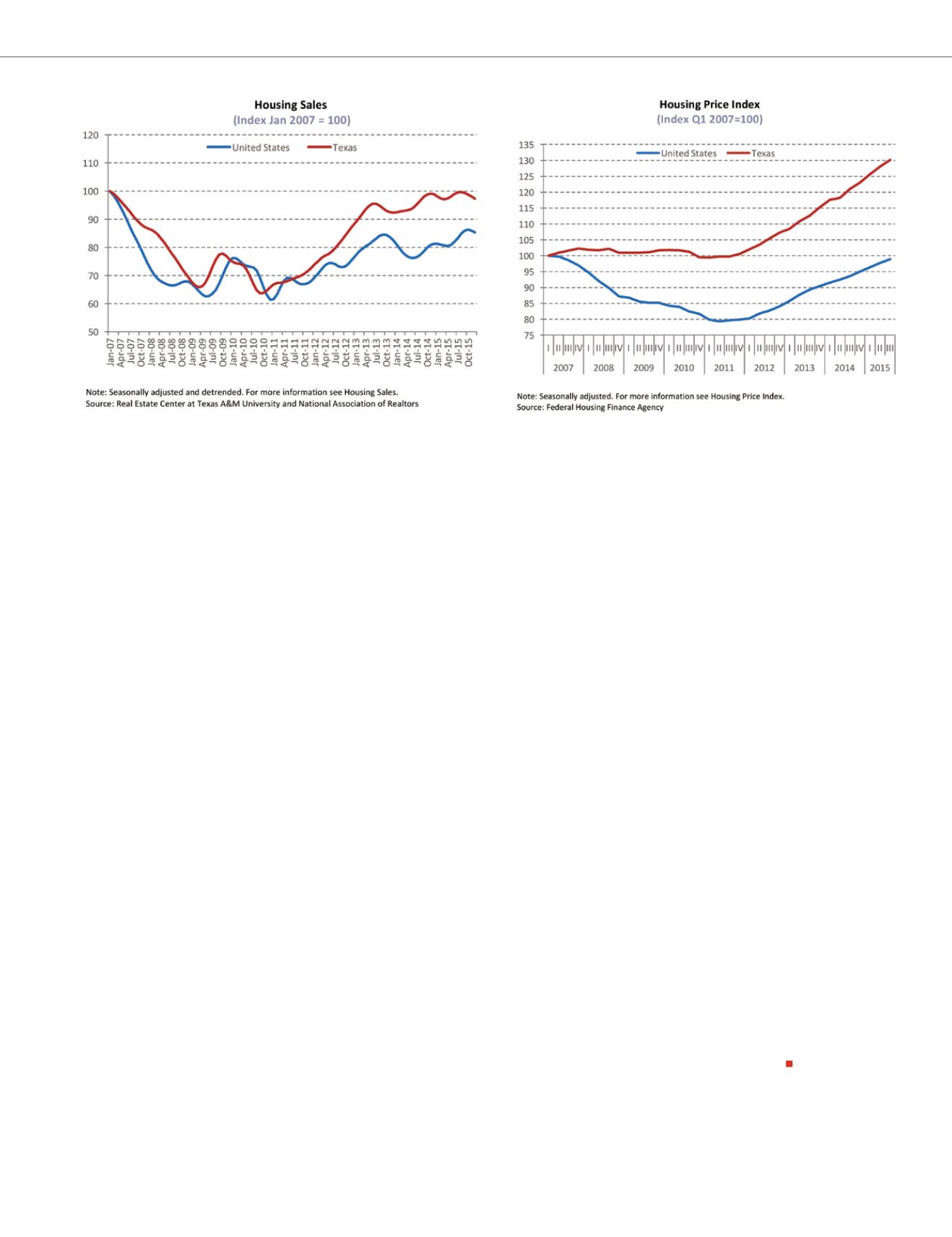

24
Texas Association of Builders
May/June 2016
Feature
market. Increased economic prosperity has
stimulated the need for land, especially
anything within close proximity to the
major metropolitan areas. That drove up
the cost of developable land, and it also
drove up the price expectations of people
who own acreage.
“Local communities want control over their
land development, and permitting fees are
rising,” said Gaines. “Texas has always been
a laissez faire state.” Regulatory cost of land
development and new home construction
had been quite low, particularly compared
to places like Florida and California, but
those costs are nowmuchmore pronounced
than they have been historically. This
only adds to the cost for home builders,
particularly those trying to construct
new homes at the lower end of the cost
spectrum. “With the economic prosperity
and wealth created, more and more people
were demanding $500,000 houses,” said
Gaines, “so home builders went into that
market where they get a better margin.
It’s an imbalance of supply and demand.
There’s a much higher level of demand right
now, and that’s bringing prices up.”
Texas is, of course, a sizable chunk of
land. These economic conditions are not
uniform across the state. There is a marked
difference between the housing markets
in two of the state’s largest metropolitan
areas. “Houston has definitely slowed down
because it’s much more tied to the energy
sector. Sales volume there is negative,” said
Gaines. “Dallas is way up and still booming.
The entire DFW Metroplex is much more
parallel with and reflective of the national
economy in terms of the diversity of jobs
and economic activity.” Also, within the
last year or so, over 10 major companies
have made the move to the Dallas area,
causing a mini, localized boom. And what
about Texas’ other major cities? According
to Gaines, Austin is down slightly after
being “off the charts” for the past few years,
and San Antonio is still solid.
Crunching the Numbers
Dr. Gaines’ Real Estate Center colleagues,
Dr. Luis Torres and Wayne Day, put out
a monthly report called
Outlook for the
Texas Economy
that summarizes significant
state economic activity and trends. In their
March report—which utilized findings
from January—they found that statewide
housing sales increased 1.9 percent year-
over-year on a seasonally adjusted basis.
As Gaines said, Dallas-Fort Worth and San
Antonio sales have increased, but Houston
dropped 4.4 percent and Austin was down
1.4 percent. Overall, Texas’ housing sales
growth has fallen behind the nation’s
growth rate in recent months.
HERE ARE SOME MORE NUMBERS TO CONSIDER:
-
$31.46 average price per barrel
of West
Texas Intermediate crude oil compared with
$47.29 a year earlier
-
3.75 months of inventory
of Texas houses
for sale—that’s low: 6.5 months of inventory
is considered indicative of a balanced
housing market
-
3 percent growth of construction
employment
(year-over-year)
-
4 percent decline of manufacturing
employment
(year-over-year)
-
4.2 percent Texas unemployment rate
compared to 4.9 percent nationally
For a Texas builder, this article may not
be the most desirable or clear forecast
one could ask for. The state’s economy is a
complicated beast, and the housing market
follows suit. Depending on location, supply
and demand, the national economy, and
other factors, there is much to consider.
But one thing is becoming more and more
obvious—in Dr. Gaines’ own words, “The
bloom is off the boom.”
For more detailed information from
TAMU’s Real Estate Center, please visit
their website:
www.recenter.tamu.edu















